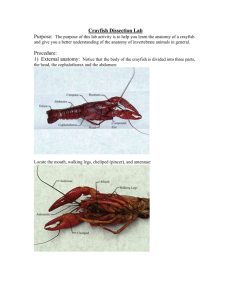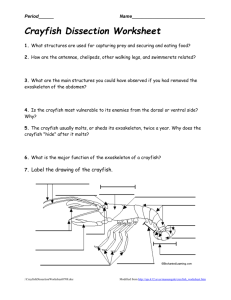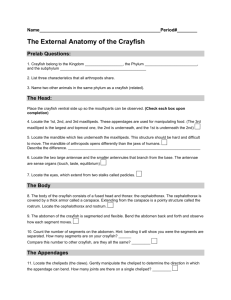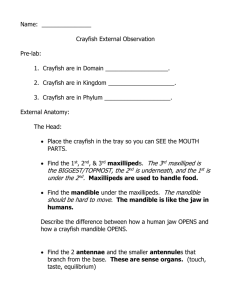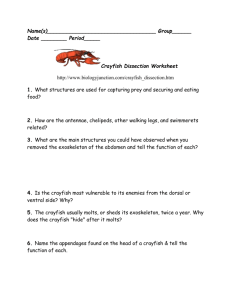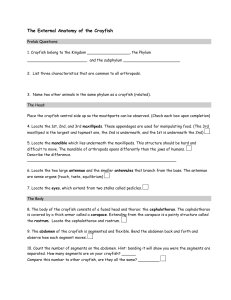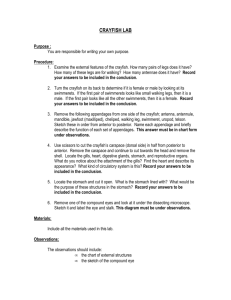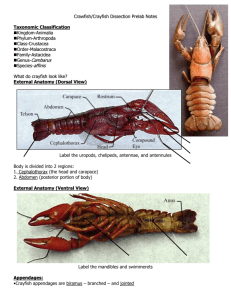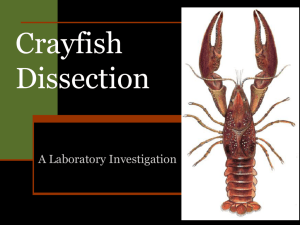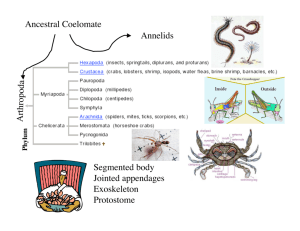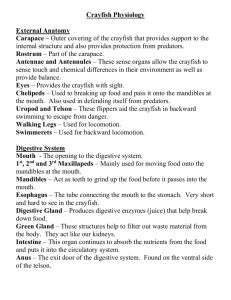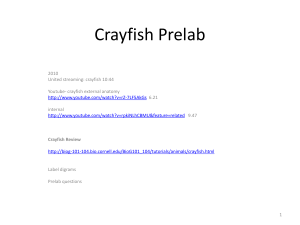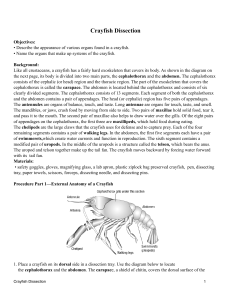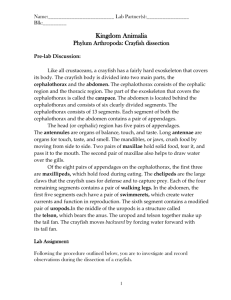external crayfish dissection
advertisement
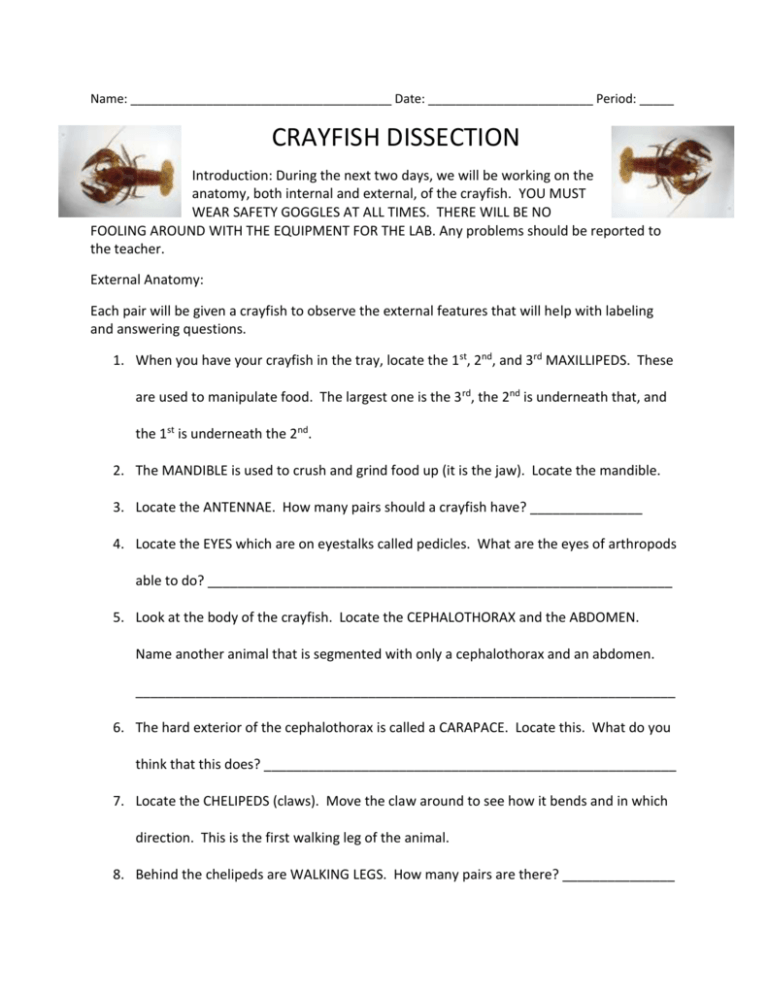
Name: ______________________________________ Date: ________________________ Period: _____ CRAYFISH DISSECTION Introduction: During the next two days, we will be working on the anatomy, both internal and external, of the crayfish. YOU MUST WEAR SAFETY GOGGLES AT ALL TIMES. THERE WILL BE NO FOOLING AROUND WITH THE EQUIPMENT FOR THE LAB. Any problems should be reported to the teacher. External Anatomy: Each pair will be given a crayfish to observe the external features that will help with labeling and answering questions. 1. When you have your crayfish in the tray, locate the 1st, 2nd, and 3rd MAXILLIPEDS. These are used to manipulate food. The largest one is the 3rd, the 2nd is underneath that, and the 1st is underneath the 2nd. 2. The MANDIBLE is used to crush and grind food up (it is the jaw). Locate the mandible. 3. Locate the ANTENNAE. How many pairs should a crayfish have? _______________ 4. Locate the EYES which are on eyestalks called pedicles. What are the eyes of arthropods able to do? ______________________________________________________________ 5. Look at the body of the crayfish. Locate the CEPHALOTHORAX and the ABDOMEN. Name another animal that is segmented with only a cephalothorax and an abdomen. ________________________________________________________________________ 6. The hard exterior of the cephalothorax is called a CARAPACE. Locate this. What do you think that this does? _______________________________________________________ 7. Locate the CHELIPEDS (claws). Move the claw around to see how it bends and in which direction. This is the first walking leg of the animal. 8. Behind the chelipeds are WALKING LEGS. How many pairs are there? _______________ 9. Remember that arthropoda means jointed foot. Move the walking legs around to see how the joints work. 10. Notice that the abdomen is also segmented. On each of those segments are appendages called SWIMMERETS. How many pairs of swimmerets are there? _________ 11. The last segment of the abdomen (the tail) is specially designed. What do you think it helps the crayfish to do? ___________________________________________________ 12. Locate the TELSON (the last segment). On the outside of the tail of UROPODS that help the crayfish swim backwards. Locate them. 13. Time to figure out the gender!! To figure out whether you have a male or female you need to look at the swimmerets. Locate those again. If the first pair of swimmerets are larger and stiffer than the others, you have a MALE! If the first pair of swimmerets are about the same size as all of the others, you have a FEMALE! Indicate which gender you have: ___________________________________________________ Based on your external dissection, label the following diagram with the correct terms. 1.) Crayfish belong to the kingdom ____________________________, phylum ______________________, and subphylum ______________________________. 2.) What are the characteristics that all arthropods have? ___________________________ ________________________________________________________________________ ________________________________________________________________________ 3.) Which appendage determines the sex of the crayfish? ___________________________ 4.) What covers the cephalothorax? _____________________________________________ 5.) What does the mandible do? ________________________________________________
